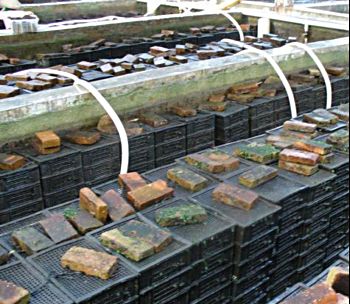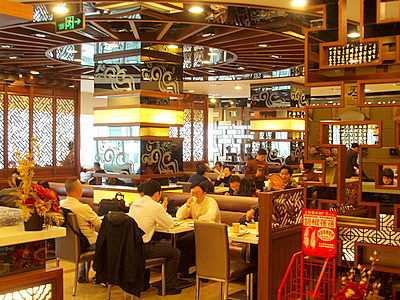
OCBC analyst
Lee Wen Ching
Lee Wen Ching
The research house expects Oceanus’ earnings per share to grow 133% this year and 50% next year.
”As the essence of Oceanus' value lies in its biological assets, we value the group based on 2x blended FY09/10F net asset value, deriving a fair value estimate of S$0.40,” wrote OCBC analyst Lee Wen Ching.
Oceanus (stock price: 29 cents yesterday) is the largest land-based abalone producer in the world with a population of 137.9 million caged abalones and 24,000 tanks spread across 41 farms in China.
The group plans to expand its capacity to 40,000 tanks by end FY09, and will increase its abalone population by 150 million per year.

Source: OCBC Investment Research
In 1Q09, the group reported a 28.4% year-on-year growth in aquaculture sales to RMB65.0 million. Net profit surged by 86.3% to RMB107.9 million as gains from fair value changes jumped 116% following the rapid expansion of its abalone population.
Abalones are bred till around three years old before being sold. Selling prices grow exponentially with the size of the abalone (i.e. an older and larger abalone can command a better price and higher margins).
As Oceanus' abalone population grows to a marketable size over the next few years, the value of Oceanus' biological assets will expand significantly, said Wen Ching.
In addition, Oceanus plans to breed 150 million abalones per year, which will boost the size of its abalone population and, in turn, the value of its biological assets.
Oceanus' breeding costs amount to RMB35/kati as compared to RMB60-70/kati on average for PRC sea farmers, and RMB150-160 for Australian and South African farmers.

Cages containing abalones are submerged in tanks. Photo: www.oceanus.com.sg

Abalones are grown in cages which are stacked one upon another. Photo: www.oceanus.com.sg
Management targets to open 15 restaurants this year, 50 in 2010 and 100 in 2011.
”We view this strategy positively as it not only enlarges the group's target market, but also reaps better profit margins. The group is in early stages of its downstream activities, and we expect these businesses to only contribute meaningfully to the group's earnings in the next two years,” wrote Wen Ching.
Management expects Ah Yat Tian Xia to contribute meaningfully to the group's earnings from FY10. The chain could unlock shareholders' value via a potential spin-off in future.
As for processing activities such as the canning and drying of abalones, Oceanus can not only stabilise its sales (prices of canned and dried abalones are less volatile than live ones), but also extract additional value along the value chain, noted Wen Ching.
Dried abalones can fetch an average selling price of USD1,000/kati, far higher than the USD30/kati that live abalones command. This implies that there is significant value that Oceanus can unlock by processing its abalone.
“We expect meaningful contribution from its downstream processing activities from FY11 onwards,” wrote Wen Ching.

At Oceanus' joint-venture restaurant in Shanghai. Photo by El Lee.
Several risks
According to management, they are already in talks with Japanese counterparts and target to enter the Japanese market next year to supply frozen abalones.
As for the risks associated with Oceanus, she noted that besides having a short listing history and track record, Oceanus faces execution risk - over-expansion with no certainty of demand, as well as operational challenges involved in handling a larger population of live abalone.
It also has intensive capital requirements, which is not uncommon among businesses in the expansion phase of their life cycles.
The group recently raised S$73.5m from private investors and does not foresee further fund raising activities in the near future. Nevertheless, future fund raising activities could potentially result in dilution.
In a bid to preserve capital for expansion, management does not anticipate any dividend payouts until FY10 when capital expenditure eases.
Oceanus’ abalones risk an outbreak of disease. Half of the group's biological assets are covered by insurance.
The OCBC Investment Research report said detailed procedures have been implemented at the
operational level to prevent the spread of diseases. Tanks are segregated into individual cells, water is fully drained and changed every week, constant water circulation is ensured, and the source of water is periodically tested for harmful substances.
Another risk to bear in mind is climate change, which could also affect the breeding conditions at its farms and affect the population's growth rate.





